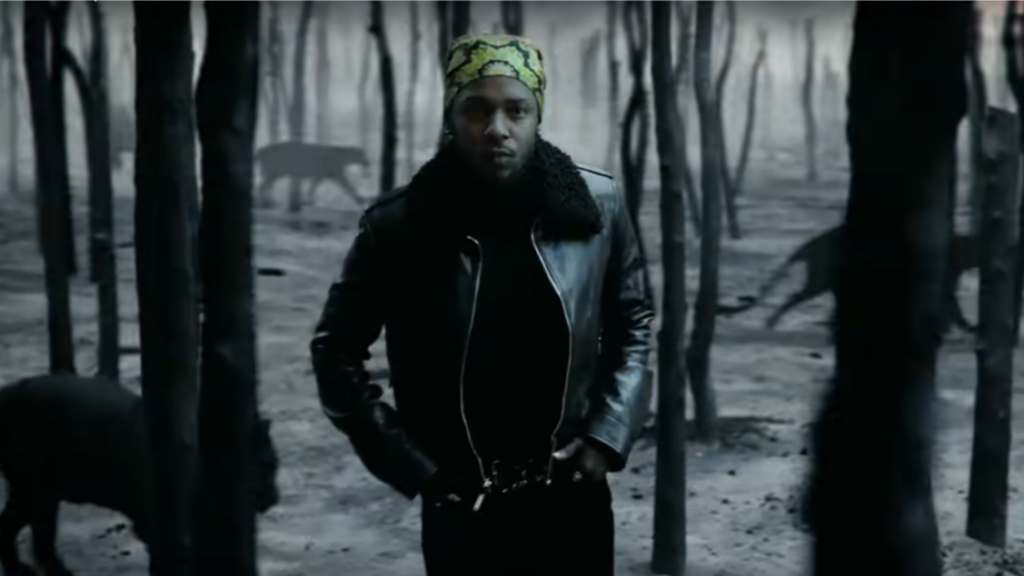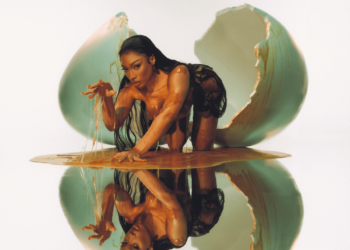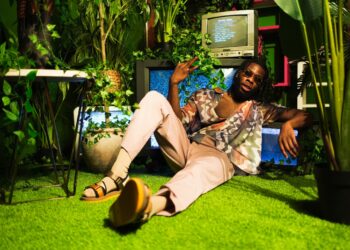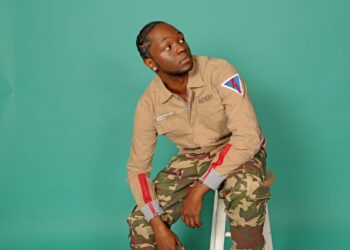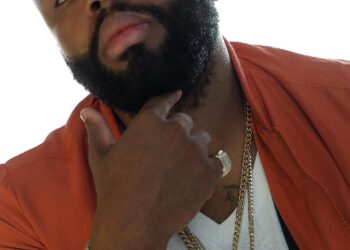The level of praise and respect that’s been given to Kendrick Lamar Duckworth, who simply adapted as stage name his first two names, is similar to huge hip-hop acts like Snoop Dogg and even Tupac Shakur. But, as Snoop and 2Pac gained their status throughout the decades they are known, Kendrick, on the other hand, is relatively new in the game compared to other acts that are, just like him, regarded as one of the greatest rappers of all time.
Just like in the 90s and the 2000s, rap music never submerged but rather developed to an important part of today’s popular music. This era of music works differently though, and more and more artists can expand their brand on their own: The independent scene grows bigger by the minute as – in comparison to the 90s and the decades before – everybody can have an equal opportunity to create quality music. With the help of programs like audio workstations on your laptop or PC, producing and mastering without spending time and money at a studio, making tunes ready for streaming services and download sites. A doorway for many rappers to come and show what they are capable of. On the downside, it makes it harder to stand out of a crowd with an uncountable list of artists wanting a piece of that cake. Kendrick, who’s often nicknamed by his alias ‘Kung Fu Kenny’, is, on one hand, one of the bunch of many: Independently put out one mixtape after another under his moniker K-Dot, until he finally caught the attention of Top Dawg Entertainment, an indie label based in Carson, California. Maybe it’s his noticeable perseverance, or maybe his original style. A rapper and a poet, an artist and a public speaker. Whatever it may be, his persistent energy made him stick out. Yet, his lyrical and musical contents share links to the vibe conceived by early rappers like Tupac and The Notorious B.I.G.

Kendrick – a kid from Compton, California, witnessing gang violence and death, growing up on welfare and in section 8 housing (using a similar title for his debut album ‘Section.80’). His lyrics, speaking about being caught in the mids of that spectrum but also explaining the world he lives in and the survival he has to face, share parallels to Tupac and his music. Therefore, Kendrick is probably seen as a rapper who continues the musical direction shaped by trailblazer rappers from the late 80s to the early 90s. He was, in fact, influenced directly by Tupac and Dr. Dre when witnessing them filming ‘California Love’ when he was 8 years old, and funny enough accomplished to sign with Dr. Dre’s Aftermath label for his first major record label debut ‘Good Kid, M.A.A.D. City’ from 2012. Singles like ‘Swimming Pools (Drank)’, ‘Poetic Justice’ (feat. Drake) or ‘Bitch, Don’t Kill My Vibe’, quickly gained response from mainstream radio, and levelled up his critical praise with 2015s ‘To Pimp A Butterfly’ (including the demo collection of unreleased songs named ‘Untitled Unmastered’ from 2016), getting continued acclaim for 4th album release ‘DAMN.’ from 2017, that did not only earned him a Grammy for Best Rap Album but most notably the 2018 Pulitzer Prize for Music – the first time ever that a non-jazz or classical work was honored with that accolade. A notable imprint he created in rap for the 2010s.

Out of his whole catalogue, Kendrick shaped hip-hop for an entire target group of rap fans with just too many of his songs to name as influential. Nevertheless, here are ten chosen picks of single releases throughout the decade that helped create a platform for the new school. The list includes songs put out as single releases that made an influential stamp in hip-hop and Kendrick’s career in general (the listed tracks are in no specific order).
Swimming Pools (Drank) (from Good Kid, M.A.A.D City, 2012)

Whether we like to admit it or not, we all once drank alcohol to ‘fit in with the popular’ just like Kendrick is quoting in ‘Swimming Pools (Drank)’. Sometimes more than we bargained for, as the lyrics underline the tragedy of heavy drinking that may bring an end to someone’s life, and Kendrick taking the courage to admit that he was also a victim of peer pressure. In a time where rap songs about drinking were rapped as a necessity to stay in line with other hip-hop artists, it’s none other than ‘Swimming Pools’ that flips the message around. Pressured with the words “Why you babysittin’ only two or three shots? I’mma show you how to turn it up a notch”, then close to alcohol poisoning at the second verse, where his conscience tells him in a high pitched voice that he’ll be history when he’s abusing his limit. With ‘Swimming Pools’ Kendrick opened a door for rappers of his standard that it’s not necessary to use alcohol to act out as a hustler, and how bad it can turn out when emulating (or imitating) people. He therefore early in his career offered something else.
HUMBLE. (from DAMN., 2017)

Maybe his biggest song till now, the aggressive but catchy ‘Humble’ starts off with guitar strings exclaiming “nobody pray for me, it been that day for me!” – or – “wicked or weakness, you gotta see this!” in the music video version. In a rhythmic pace, Kendrick fires up his thoughts in classical rap fashion: “I’m so f*cking sick and tired of the Photoshop / Show me something natural like afro on Richard Pryor”. Released as the lead single of his fourth studio album ‘DAMN.’, the track was the first recorded for the album, and actually meant for producer’s Mike Will Made It’s solo album ‘Ransom 2’ but got convinced by Mike to use it for his own album. While ‘Humble’ is as serious as easy, a great party track but honest and serious too, it’s supported with an innovative video directed by famous music video director Dave Meyers (‘Temperature’ by Sean Paul, ‘Firework’ by Katy Perry), where Kendrick acts out ‘The Last Supper’ by Leonardo da Vinci together with his mates that he tells to ‘sit down’ and ‘be humble’. The song itself is good for every hip-hop setlist and never gets old.
All The Stars (with SZA) (from Black Panther: The Album, 2018)

Released as the official single for Marvel’s Black Panther film (and lead single of the soundtrack of the same name). In addition to the song, Kendrick created an atmosphere of African history in the music video with singer SZA, connecting the magical world of fictional Wakanda from the comic series and movie in a version that suits the film and African culture, with themes of Afrocentrism and Afrofuturism. With a snake-like rhythm, the listener gets hypnotized while digging into the song, then awakened by SZA’s hook where she exclaims how “all the stars are closer”. Kendrick only has one rap verse but gives his all with clever rhymes. Unique beats and sounds make ‘All The Stars’ a highlight, both for the movie, but can easily stand on its own, too.
Backseat Freestyle (from Good Kid, M.A.A.D City, 2012)

Influenced by rapper Eminem, Kendrick took a one-shot opportunity to make his best Em impression in ‘Backseat Freestyle’ (stated in Vibe magazine). As Eminem is known for his obscene rap lines and rap outbursts, the energy is indeed transferred in ‘Backseat’: Kendrick’s rap lines are either yelled, shouted, or weirdly exclaimed. Basically the whole package, most notably in the hook where his words, sounding annoyed and moody, follow a steady line of putting more and more backup in his rap to strengthen a dragging voice. In between the song he also uses voice techniques to sound like a drunkard on the streets, or like a hooligan during a football match. Even the lyrical content supports the aggressive nature powered up by producer Hit Boy’s sample of “Arrinkinkinkin!!”, that’s originally from ‘Yo Soy Cubano’ by The Chakachas.
‘Backseat Freestyle’ is the album’s answer how to let loose with a ‘don’t care’ attitude when facing a life on the streets. Basically a piece of the puzzle from the entire album of ‘Good Kid, M.A.A.D City’ that broaches the issue of racism and big city life in many different layers. According to Volksgeist, the album’s entire body of work can be seen as a ‘universal look at life, death, family, community, faith and growth’ as well as a ‘meditation of the inner conflict between man and society’. This can make sense for ‘Backseat Freestyle’ too, as it starts off with Kendrick shouting “Martin had a dream, Kendrick have a dream”, a reference to activist Martin Luther King Jr., which may reflect that yesterday’s issues shake hands with the issues of today as well.
LOVE. (feat. Zacari) (from DAMN., 2017)

In comparison to the heavy content that Kendrick is known to pull out track by track, ‘Love’, instead feels very lighthearted. The R&B filled taste with a relaxing rhythm, supported by label mate Zacari’s calm vocals in the hook of the song, makes ‘Love’ a standout. Even though Kendrick never directly spoke about the true meaning, it is widely speculated by fans to be an ode to his own wife. Relationship topics, like doubts and emotions to arguments and misunderstandings, build up the lyrical content (“If I didn’t ride blade on curb would you still love me?”). Just like many of Kendrick’s other tracks, it goes back to Kendrick’s deep side in thinking and analyzing, sometimes even overanalyzing. But the easy flow of the song does not disturb the deep lyrics.
‘Love.’ was released as final radio single from ‘DAMN.’, and makes the song shine even more with a beautiful shot music video directed by Dave Meyers, who also directed ‘HUMBLE.’ and many other videos for Kendrick. Starting off at a shore of a beach in almost sundown, Kendrick walks alone next to the shore, and a woman is seen in exotic clothes catching a lot of wind. Afterwards, five scenarios of Kendrick and his girlfriend at the dinner table are played out. First, his girl and him getting romantically closer. Second, both of them enjoy their company laughing. Third, both eat in silence as slowly the relationship crumbles, breaking out in a massive fight in scenario four where his girlfriend even crashes a plate, to scenario five, his girlfriend left him and Kendrick is on his own, with his feet on the dinner table and a bottle as his company. The music video makes it clear that Kendrick tries to give an all-round image of love – all ups and downs, but also shares the beauty of women: The video is filled with models, with one covered in what seems like silver glitter, exposing her breasts, which could be a metaphor of temptation and beauty, then ending with Kendrick making up with his one true love from the earlier mentioned scenarios. As there are so many women to choose, he rather stays with his one and only. This makes ‘Love’ a stand out by sharing a different side of Kendrick. Simply calm and simply beautiful.
These Walls (feat. Bilal, Anna Wise and Thundercat) (from To Pimp a Butterfly, 2015)

The final single of his third LP ‘To Pimp A Butterfly’ (2015) it’s stated by Kendrick himself to be one of his favorites from the album. Guided by the famous expression ‘if these walls could talk…’ it’s a track where, like many others of Kendrick’s, you might have to re-read the lyrics a couple of times to get a certain understanding. As some lines of ‘These Walls’ have some cryptic meanings, they play around with certain themes Kendrick is known for, like racism, street life and the human psyche. It does, however, get a clearer image in its final verse: A criminal who is behind bars killed a friend of Kendrick’s, so he gets back at him by sharing the bed with the woman the man has kids with. Furthermore, Kendrick underlines how he was able to pull this through, using the power of fame as a weapon, taking advantage of being a famous rapper. An act of bittersweet revenge, but also makes you think how fame can abuse power. A reflection of the life before and after fame, and how both lives are connected.
King Kunta (from To Pimp a Butterfly, 2015)

“I got a bone to pick”, that sentence already starts off promising, knowing Kendrick is going to spill some lines and content in rhythmic ‘King Kunta’. A reference to Kunta Kinte, a character in Alex Haley’s 1976 novel ‘Roots: The Saga of an American Family’ about a rebellious slave who originally came from The Gambia. Kendrick references Kunta in the lyrics that are based on black oppression. Other themes include hip-hop rivalry and links to his neighborhood in Compton, California. The music video, directed by Director X, was filmed in Compton as well and plays out a back-to-the-roots scenario of Kendrick’s home town and community. Basically, K-Dot’s home base from an outsider’s view, witnessing in the video how his early years played out. In a white tee, Patriots jacket and a blue Dodgers cap, Kendrick introduces his birthplace to the viewer by walking around streets filled with neighbors and friends from the area and entering convenience stores. On one side a bunch of neat looking vintage cars side by side, on the other side a cyclist showing tricks on his motorcycle. Kendrick, later on, sits on a golden throne, but also dances around with his mates, perhaps as a way for him to express the achievement of gaining respect from his community but on the same time still showing being grounded and part of one whole. A great take to honor his home town. Moreover, ‘King Kunta’ was even placed number 8 of Billboard’s 100 Greatest Music Videos of the 2010s.
DNA. (from DAMN., 2017)

Though ‘DNA.’ was never officially put out as a single from ‘DAMN.’, the song itself is too exceptional to ignore. Even rhythmic radio couldn’t get enough from the album track. Used for promotion for the 2017 NBA Finals (together with ‘Humble.’) as well as NBA Live 2018 and part of the Madden NFL ‘18 soundtrack, the song also made its way to commercials and trailers, including the trailer for film ‘Creed II’, starring Michael B. Jordan and Sylvester Stallone (2018).
Starting off as the second track from ‘DAMN.’, following up on ‘BLOOD.’ – a 1.58-minute introduction that makes a clear idea about gang violence in spoken form where an old lady turns out to be a criminal: “You’ve lost your life”, and poof! A gunshot, then switching to an audio clip from Fox News were they discuss Kendrick’s 2015 BET opening performance of ‘Alright’, where he raps about police brutality, and the newscasters reacting negatively towards his lyrics and approach: “… Ugh, I don’t like it!” The track then immediately starts with Kendrick’s rap about different aspects of his DNA and, according to YouTube channel ‘thought’, compares DNA to circumstances and lifestyle he’s confined to (“I got off, I got troublesome, heart inside my DNA”). The song is also notable for its disturbance in the mids of the track, rapping in fast-forward mode after sharing a final audio clip from that same news report, where reporter Geraldo Rivera infamously commented: “This is why I say that hip-hop has done more damage to young African Americans than racism in recent years.” Kendrick gives a loud response back that he recorded as an acapella and the producer, Mike Will Made It, later on, built a beat around his rap. A direct message with a response to Fox News that he also indicates in the follow-up album track ‘YAH.’ (“Fox News wanna use my name for percentage”).
In addition, ‘DNA.’ is noticeable for its music video where Kendrick is held captive, attached to a lie detector machine, while actor Don Cheatle makes an entrance as his interrogator: “Kendrick Lamar… Two first names, huh? The f*ck is up with that?” Then, Cheatle’s character turns the machine on and gets shocked, and the lie detector starts working before anyone even starts speaking. Afterwards, Cheatle starts to rap the song and switches lines back and forth with Kendrick, both mirroring expressions, then Cheatle unhands Kendrick, and he returns to his peers outside. The scene where the lie detector starts working before anyone starts speaking may represent, assumed by ‘thought’ as well, that racism has been lead to assumptions before the accuser can even defend themselves. It is also believed that the scene is a nod to a scene from ‘The Day The Earth Stood Still’, a 2008 film with Keanu Reeves (pointed out by ‘Insider’).
Alright (from To Pimp a Butterfly, 2015)

“Lucifer was all around me” exclaims Kenrick as a foreword for, basically, the entire theme of ‘To Pimp a Butterfly’. As Kendrick stated during an interview with MTV, the album discusses leadership and questions how it can be used, for better or worse, with money and celebrity status as factors: “Can I pimp it negatively or in a positive way?” It’s the battle of both worlds, the new world in the public versus the base and reality of his former life, both intertwining, the glamour vs. the reality check when three of his close friends from his neighborhood were murdered, Kendrick dealing where he comes from, supporting family and relatives after the tragic, still having to face realities from his former life. For Kendrick, the question remains, “how can I be a voice for all these people around the world, and can I reach them like I want to?” According to him, it’s the survivor’s guilt, and how to use his influence. These themes continue throughout the album, sharing depression and suicidal thoughts in ‘u’, then followed up right after with hopeful ‘Alright’.
The song starts off with a famous line of Alice Walker’s ‘The Color Purple’ (“Alls my life, I has to fight”), and even though dark pages about racism, poverty, street life, survival, and depression fill Kendrick’s lyrical content, it’s ‘Alright’ that brings an uplifting light towards all that. The strong belief that “we gon’ be alright” even when it seems as if it’s not, created such a positive outcome that the song was chanted during protests of the Black Lives Matter movement, and used as an inspiration for youth and injustice. Kendrick himself got inspired to write the track (and some other songs from the album, too) when visiting South Africa, witnessing their struggles “ten times harder”. As conclusion to ‘Alright’, he stated “I can either pimp this situation or I can fall victim to it”.
Supported by a black and white music video directed by Colin Tilley and The Little Homies, Kendrick can be seen floating or flying through California, standing on a pole of a traffic light and later standing on a lamppost where a policeman shoots him down (portrayed as a finger gun instead of using an actual gun in the video), then Kendrick falling on the ground, but just when thinking he didn’t survive the fall, he looks at the camera with a grin. In addition, Kendrick performed the song at the BET awards in 2015, standing on a graffiti-embossed police car flanked by an American flag, addressing police brutality. This led to some controversy (see ‘DNA.’ – section), but kept him moving. ‘Alright’ won two Grammys for Best Rap Performance and Best Rap Song in 2016 and has been placed at number one of Pitchfork’s 200 best songs of the 2010s.
i (from To Pimp a Butterfly, 2015)

Released as the lead single from Kendrick’s third studio album ‘To Pimp a Butterfly’, ‘i’ makes notice of itself with a countrified vibe that is created with guitar and bass, backed up with a sample from 70s soul classic ‘That Lady’ by The Isley Brothers, where Kendrick asked permission from lead vocalist Ronald Isley to use the song for his track. From the album’s heavy themes of depression, racial inequality and discrimination that also get in line with ‘i’, the song’s message can be defined with Kendrick’s way of saying to ‘keep on moving’ or not giving up (“look at me motherf***er I smile”), using self-love as a motivational tool, as the hook goes “I love myself”. In addition, Kendrick strengthens the song’s theme by dancing throughout a run-down neighborhood in a funny, but also cool way, moving his arms up and down, later reenacting Heath Ledger’s Joker scene from ‘The Dark Knight’ (2008) – in Kendrick’s own ‘Kung Fu Kenny’-style – hanging out of a car’s window.
Even though released as the first single to represent the album at the beginning (plus winning two Grammys in 2015 for Best Rap Performance and Best Rap Song), ‘i’ is noticeably different on the album than the actual single-release, produced in a style as if he performs the song live in front of a crowd with audience interaction, exclaiming in-betweeners like “come to the front” to the masses. Later on, a fight in the crowd escalates, with Kendrick responding and, as the song is broken off due to the fight, he ends with a freestyle acapella rap. When Kendrick was interviewed by MTV and asked why the album version is different than the single, Kendrick explained that this was his ideal idea, having to be cohesive with the conceptual part of the album, seeing things as scenes and movies when he writes, as it plays in a part going to ‘Mortal Man’, the final track from the album, addressing survival’s guilt and ending where he acts out a conversation with Tupac (from an audio recording he received when he was in Germany, from an interviewer who gave him the audio as he felt both Kendrick and Tupac share the same sentiments). As they both share a similar vision that still to this day is ongoing, Kendrick easily responded to the importance of the ‘dialogue’ between him and Pac at the end of the album: “The answer’s Pac is giving are answers for today.”
Kendrick Lamar’s content is filled with deep lyrics and innovative rhythms, feeling like entering a different zone when digging in his tracks and albums. These ten tracks carried part of the weight, but in fairness, it’s very hard to define which of his singles has more influence than the other as basically all of them act like pieces of one big puzzle. Other notable picks are ‘HiiiPower’, ‘The Blacker The Berry’, ‘Bitch, Don’t Kill My Vibe’, and ‘Poetic Justice’.

